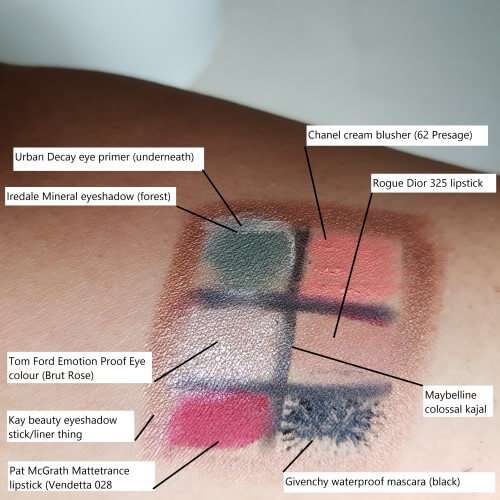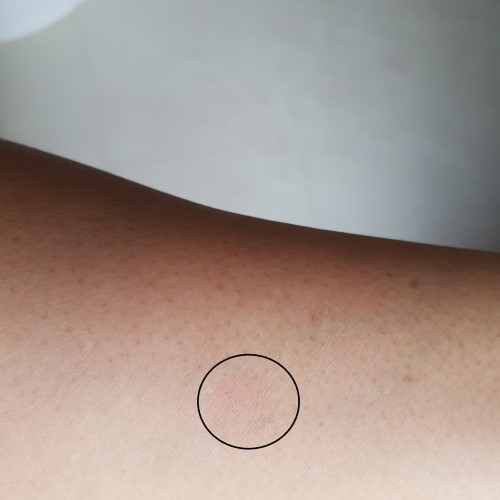Micellar waters are a very fancy name for a mild cleanser with the following characteristics: they have mild surfactants (or cleaning agents); are non-foaming and contain moisturising ingredients.
You can read about the technical detail on how micellar water or facial cleansers work at this BLOG.
What am I testing and why?
I am road-testing Garnier’s micellar water, specifically the claim that it removes make-up.
Before photo

After applying a copious mix of waterproof, pigmented and shiny make-up, my forearm looked like this:
I then pressed down a pre-soaked (in micellar water) cotton pad on the above patch and counted to 5. Finally, I wiped over this area (quite firmly) exactly 4 times.
After photo

The results are very good: this is the only micellar water that has not only got rid of most make-up but also, reduced the pigmented lipstick.
The ingredient label explains why: the primary surfactant is Disodium Cocoamphoacetate, a mild cleansing agent that because its listed as the 4th ingredient is present in sufficient quantities to be effective.
(P.S. Disodium Cocoamphoacetate is frequently used in micellar waters because it works well with other surfactants, and has low eye and skin irritation potential….)
The second listed surfactant is Poloxamer 184 (but this is the last ingredient, so I am not quite sure why Garnier put it in).
The product, like most micellar waters contains Glycerin, a humectant that absorbs water from the deeper levels of the epidermis to make the skin smooth. (Source: Draelos)
To buy, or not to buy?
There is very little reason not to buy this product. It has so few ingredients* and it does the job.
*7 ingredients in the product = 2 are surfactants + 1 moisturising agent (Glycerin) + 1 preservative (Myrtrimonium Bromide) + 2 solvents (Water and Hexylene Glycol).
SourceL Draelos ZD, The science behind skin care: Moisturizers. J. Cosmet Dermatol. 2018; 17:138-144
